Can You Draw with Both Hands? Exploring Ambidextrous Art
Have you ever watched an artist create a masterpiece and wondered, "How do they do that?" Now, imagine if that artist could create with both hands simultaneously! This intriguing phenomenon is known as ambidexterity, and it opens a whole new world of artistic possibilities. Drawing with both hands not only showcases an artist's skill but also taps into the brain's incredible potential. In this article, we will delve into the fascinating realm of ambidextrous art, exploring the capabilities, techniques, and benefits of this unique skill. Whether you’re an aspiring artist or just curious about the subject, you’re in for a treat!
To truly appreciate ambidextrous art, it's essential to understand the neurological and psychological aspects behind it. Ambidexterity is often linked to how the brain is wired. Most people are right-handed, which means their left hemisphere is dominant for tasks like drawing. However, some individuals develop the ability to use both hands proficiently, thanks to a more balanced brain function. This dual-handedness can stem from genetics, early childhood experiences, or even deliberate practice. Imagine your brain as a complex orchestra; when both sides play in harmony, the result is a symphony of creativity!
Throughout history, several renowned artists have showcased their ambidextrous talents, leaving a significant mark on the art world. For instance, Leonardo da Vinci was known to write with one hand while sketching with the other. His ability to multitask not only enhanced his artistic expression but also allowed him to explore various concepts simultaneously. Similarly, modern artists like John D. McDonald have pushed the boundaries of traditional art forms by integrating ambidextrous techniques into their work. These artists prove that being able to draw with both hands can significantly enrich one’s artistic journey.
Looking back at history, we find that many famous figures were ambidextrous. For example, Benjamin Franklin, a polymath and one of the Founding Fathers of the United States, was known for his ability to write with both hands. His ambidextrous skill not only influenced his scientific work and inventions but also contributed to his political writings. This dual-handedness often played a crucial role in the art movements of their time, as these artists could explore and express ideas in ways that others could not. They were like two sides of the same coin, each hand complementing the other in the creative process.
Let’s take a closer look at some specific artists who have mastered ambidextrous techniques. One such artist is Jesse Reno, known for his vibrant and chaotic paintings. Reno often utilizes both hands to create dynamic compositions, allowing him to layer colors and textures in a way that feels spontaneous yet deliberate. His journey into ambidextrous art began as an experiment, but it quickly transformed into a defining feature of his style. Another example is Joni Mitchell, who, while primarily known as a musician, has also explored visual art using both hands to create stunning mixed media pieces. These artists exemplify how ambidexterity can lead to unique artistic expressions.
Ambidextrous artists employ various techniques to effectively utilize both hands in their artwork. Some may choose to draw complementary elements simultaneously, while others might alternate between hands for different tasks. For instance, an artist might use their dominant hand for detailed work while employing their non-dominant hand for broader strokes. This approach not only enhances the texture of the artwork but also allows for a more fluid creative process. The beauty of ambidextrous art lies in its ability to break the mold of traditional techniques, offering a fresh perspective on artistic expression.
In today's art scene, contemporary artists are embracing ambidextrous practices with innovative approaches. Artists like David Choe and Jesse Draxler are pushing the boundaries of traditional art forms by incorporating ambidextrous techniques into their work. Choe, for instance, often creates large-scale murals where he uses both hands to layer colors and shapes, resulting in a captivating visual experience. Meanwhile, Draxler’s mixed media works feature intricate details achieved through his ambidextrous skills. These modern practices not only showcase the versatility of ambidextrous art but also inspire a new generation of artists to explore their creative potential.
The advantages of drawing with both hands extend far beyond just artistic flair. Engaging in ambidextrous drawing can lead to significant cognitive and creative benefits. For starters, it can improve coordination and enhance creativity. Imagine trying to juggle while painting; it forces you to think outside the box and develop new strategies. Additionally, ambidextrous drawing can help artists multitask, allowing them to work on multiple aspects of their art simultaneously. This skill can be particularly beneficial in collaborative projects, where teamwork and flexibility are essential.
Practicing ambidextrous drawing can also lead to the development of new artistic skills and techniques. As artists challenge themselves to use both hands, they often discover new ways of thinking and creating. This exploration can enrich their overall practice, leading to innovative styles and techniques that set them apart from their peers. It’s like opening a new toolbox filled with creative possibilities—each tool represents a different skill or technique waiting to be mastered.
Beyond the artistic benefits, ambidextrous drawing can have therapeutic effects as well. Engaging in this practice can provide stress relief, improve focus, and even serve as a form of cognitive rehabilitation for individuals recovering from neurological conditions. The act of drawing with both hands can be a meditative experience, allowing artists to immerse themselves in the moment and express their emotions in a tangible form. It’s like a form of artistic mindfulness, where the focus shifts from external pressures to internal expression.
If you’re intrigued by the idea of drawing with both hands, there are practical tips and exercises you can try to develop your ambidextrous skills. Start by practicing simple shapes and lines with your non-dominant hand while drawing with your dominant hand. Gradually increase the complexity of your drawings as you become more comfortable. Another effective exercise is to alternate hands while drawing a continuous line, which can help improve coordination and fluidity. Remember, the journey to ambidexterity is about practice and patience, so don’t be afraid to experiment and have fun along the way!
- Can anyone become ambidextrous? Yes, with practice and dedication, many people can develop ambidextrous skills.
- Is being ambidextrous beneficial for all artists? While it can enhance creativity and coordination, it ultimately depends on the individual artist's style and preferences.
- What are some exercises to improve ambidexterity? Simple exercises like drawing shapes with your non-dominant hand or alternating hands while sketching can help.
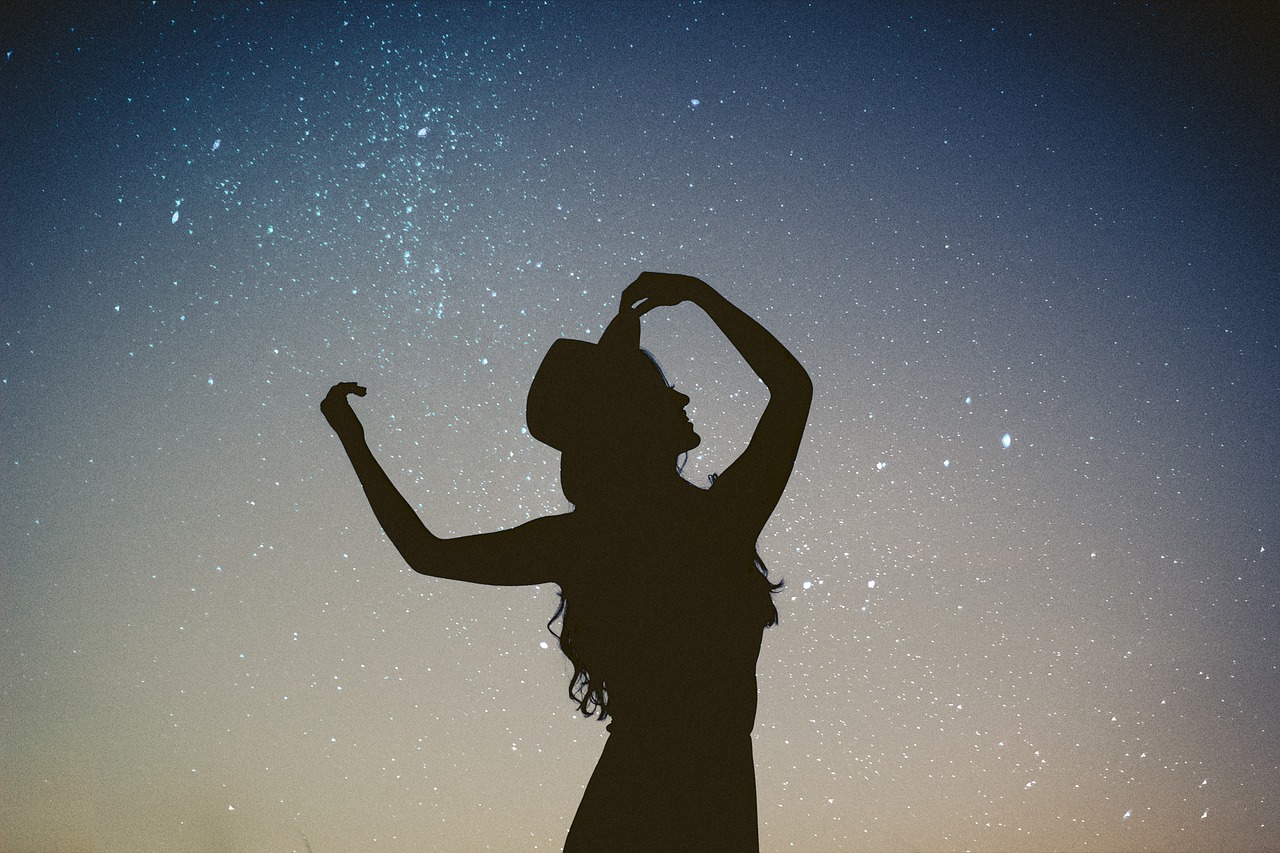
The Science of Ambidexterity
Understanding the phenomenon of ambidexterity opens up a captivating window into the human brain and its remarkable capabilities. Ambidexterity, the ability to use both hands with equal skill, isn't just a quirky talent; it's a fascinating interplay of neurological and psychological factors. Research suggests that approximately 1% of the population is truly ambidextrous, while many others may have a dominant hand but can perform certain tasks with their non-dominant hand. This leads us to ponder: what makes some individuals more adept at using both hands?
The neurological basis of ambidexterity lies in the brain's structure and function. Typically, the left hemisphere is responsible for controlling the right side of the body, and vice versa. However, ambidextrous individuals often exhibit a unique brain organization. Studies have shown that they may have a more developed corpus callosum, the bundle of nerves connecting the two hemispheres, allowing for better communication between them. This enhanced connectivity can facilitate a more integrated approach to tasks, enabling ambidextrous individuals to switch between hands fluidly.
From a psychological standpoint, the development of ambidextrous skills often stems from early childhood experiences. Children who are encouraged to use both hands during play or are exposed to activities that require bilateral coordination tend to develop ambidextrous abilities more readily. This is akin to learning a new language; the earlier you start, the more fluent you become. Moreover, the brain's plasticity allows for continued development of these skills throughout life, making it possible for anyone to become more ambidextrous with practice.
Interestingly, ambidextrous individuals often report a variety of cognitive benefits. They may experience improved problem-solving skills and enhanced creativity, likely due to their ability to approach tasks from multiple angles. This cognitive flexibility can be compared to a musician who plays multiple instruments; the more tools you have at your disposal, the richer your artistic expression becomes.
In summary, the science of ambidexterity reveals a complex interplay of neurological and psychological factors that contribute to this unique skill. As we delve deeper into the world of ambidextrous art, it becomes clear that the ability to draw with both hands is not just a matter of dexterity; it's a testament to the incredible adaptability of the human brain.
- Can anyone become ambidextrous? Yes, with practice and the right exercises, many people can improve their non-dominant hand skills.
- What exercises can help develop ambidexterity? Simple activities like writing, drawing, or even playing sports with the non-dominant hand can enhance ambidextrous abilities.
- Are there any famous ambidextrous artists? Yes, several renowned artists have showcased ambidextrous skills, enhancing their creative expression.
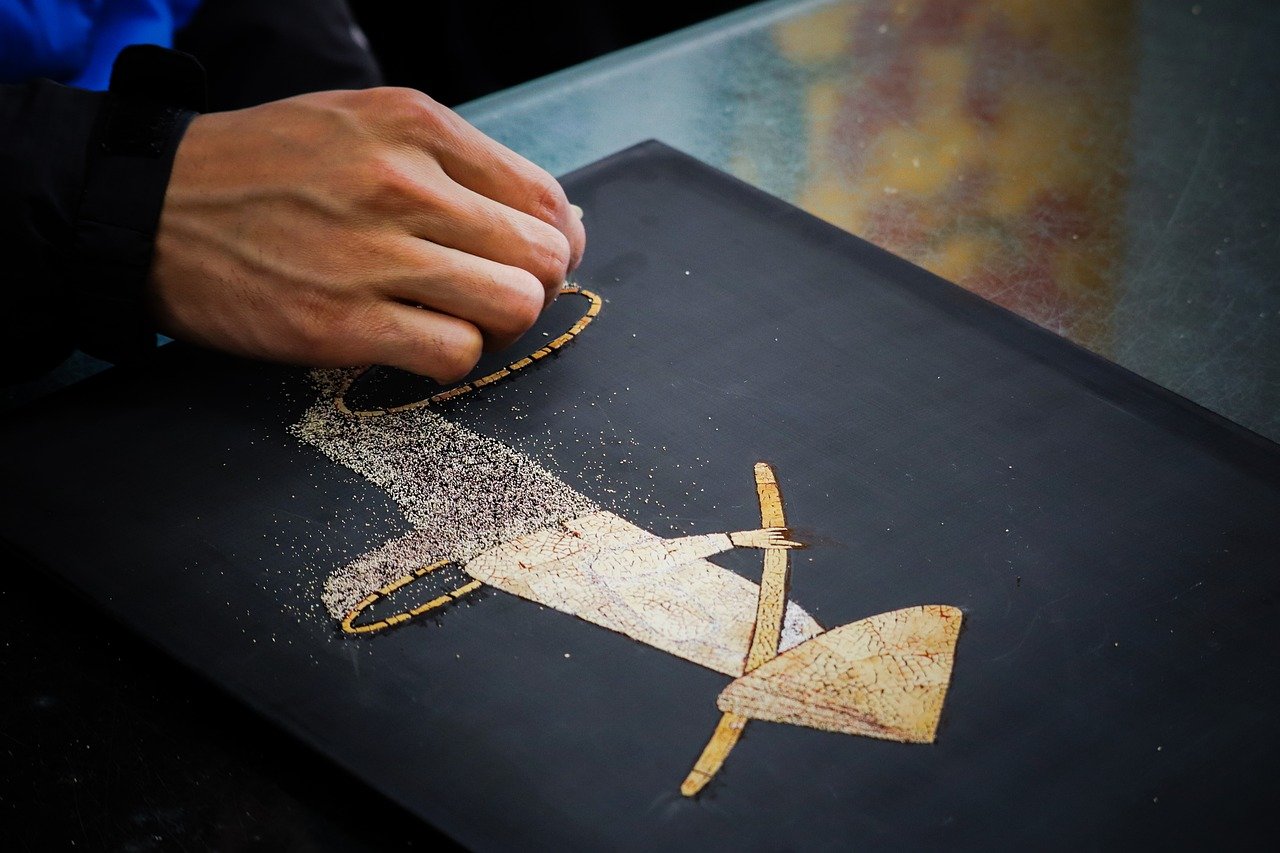
Famous Ambidextrous Artists
When we think of great artists, the first names that often come to mind are those who have left an indelible mark on the art world. But what about those who can wield a brush with both hands? The phenomenon of ambidexterity in art is not just a quirky skill; it's a remarkable talent that has been showcased by several renowned artists throughout history. These individuals have not only embraced the ability to use both hands but have also integrated this skill into their distinctive styles, creating masterpieces that captivate audiences.
One of the most famous ambidextrous artists is Leonardo da Vinci. Known for his genius across multiple disciplines, da Vinci was said to have been able to write with one hand while drawing with the other. This remarkable skill allowed him to work on complex projects simultaneously, enhancing his productivity and creativity. His ability to think in multiple dimensions is reflected in his art, where he often employed techniques that showcased both hands working in harmony.
Another notable figure is Michelangelo, who, while primarily known for his sculpting and painting, also exhibited ambidextrous tendencies. His unique ability to manipulate tools with both hands allowed him to create intricate details in his sculptures, giving them a lifelike quality that continues to inspire artists today. The fluidity of his work can be attributed to this dual-handed approach, showcasing how ambidexterity can enhance artistic expression.
In modern times, we have artists like John K. McGowan, a contemporary painter who has gained recognition for his ambidextrous technique. McGowan often uses both hands simultaneously to create vibrant, dynamic compositions. He believes that drawing with both hands allows him to tap into different parts of his brain, leading to a more spontaneous and creative artistic process. His work serves as a testament to how ambidexterity can be harnessed to push the boundaries of traditional art forms.
Interestingly, ambidextrous artists often develop their unique techniques that set them apart in the art community. For instance, some artists might use their dominant hand for detailed work while employing their non-dominant hand for broader strokes or background elements. This can create a fascinating interplay of textures and styles within a single piece. The following table highlights a few famous ambidextrous artists and their contributions to the art world:
| Artist | Notable Works | Ambidextrous Technique |
|---|---|---|
| Leonardo da Vinci | Mona Lisa, The Last Supper | Simultaneous writing and drawing |
| Michelangelo | David, Sistine Chapel Ceiling | Intricate sculpting and painting |
| John K. McGowan | Dynamic Abstracts | Simultaneous use of both hands for composition |
The stories of these artists remind us that ambidexterity is not merely a party trick; it is a skill that can elevate an artist's work to new heights. By exploring their lives and techniques, we can appreciate the profound impact that being able to draw with both hands has had on their artistic journeys. As we delve deeper into the world of ambidextrous art, we uncover the potential that lies in our own hands, waiting to be unleashed.
Q: Can anyone become ambidextrous?
A: While some people are naturally ambidextrous, others can develop their skills through practice and exercises designed to strengthen their non-dominant hand.
Q: What are the benefits of being ambidextrous in art?
A: Ambidexterity can enhance creativity, improve coordination, and allow artists to multitask effectively, leading to more dynamic and complex artworks.
Q: Are there specific exercises to improve ambidextrous skills?
A: Yes, artists can practice simple tasks such as drawing shapes, writing letters, or even painting with both hands to develop their ambidextrous abilities.
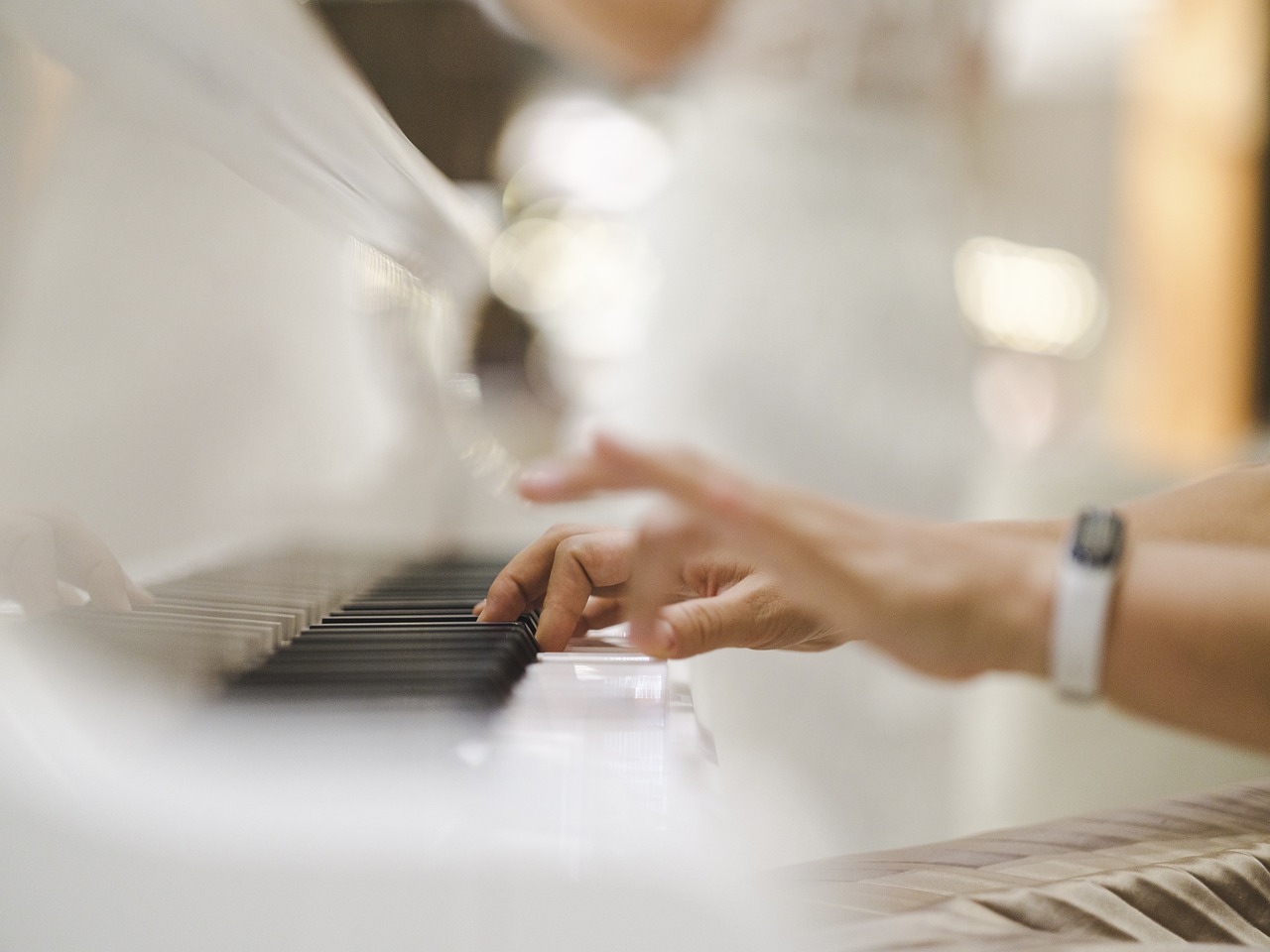
Historical Perspectives
The concept of ambidexterity has intrigued humanity for centuries, with historical figures exhibiting remarkable dual-handed skills that have shaped their respective fields, particularly in art. One of the most notable examples is Leonardo da Vinci, a polymath whose ambidextrous capabilities allowed him to create intricate sketches and paintings that have left a lasting impact on the art world. Da Vinci was known to write with one hand while drawing with the other, a feat that not only showcased his incredible talent but also demonstrated how ambidexterity can enhance creativity and productivity.
Another fascinating figure is Pablo Picasso, who, although not strictly ambidextrous, often experimented with different techniques that involved using both hands. His innovative approach to art and his ability to manipulate various mediums reflect a mindset that embraces duality, a core component of ambidextrous practice. Picasso's work illustrates how the freedom to explore with both hands can lead to groundbreaking artistic movements, such as Cubism, which challenged traditional perspectives and opened the doors to new forms of expression.
Moreover, the Renaissance period was replete with artists who exhibited ambidextrous tendencies. Albrecht Dürer, a German painter and printmaker, was known for his detailed engravings and woodcuts. Historical accounts suggest that he practiced drawing with both hands, enabling him to produce intricate works that captured the essence of the natural world. This dual-handedness not only enhanced his technical skills but also allowed him to explore complex compositions that would have been challenging with a single hand.
In addition to these renowned artists, there were numerous lesser-known figures throughout history who practiced ambidexterity. Many of these individuals were not just artists but also scientists, inventors, and philosophers, highlighting the interdisciplinary nature of ambidextrous skills. For instance, Benjamin Franklin, an iconic figure in American history, was known to write with both hands simultaneously, often producing different texts. This ability to multitask effectively exemplifies how ambidexterity can transcend the boundaries of art and influence various aspects of life.
In examining the historical perspectives of ambidextrous artists, it becomes evident that their unique abilities have not only influenced their personal artistic journeys but have also contributed to the evolution of art movements. The interplay between dual-handedness and creativity fosters an environment where innovation thrives, encouraging artists to push the boundaries of their craft. As we continue to explore the capabilities of ambidextrous art, we gain valuable insights into the potential that lies within each of us to harness our full creative abilities.
As we reflect on these historical figures, it's essential to recognize the broader implications of ambidexterity in art. The ability to draw and create with both hands opens up a world of possibilities, challenging the notion of traditional artistry and inviting a more inclusive understanding of creativity. So, whether you're a budding artist or a seasoned professional, consider the rich history of ambidextrous art and how it might inspire your own practice.
- What is ambidexterity? Ambidexterity refers to the ability to use both hands with equal skill, particularly in tasks such as writing or drawing.
- Can anyone become ambidextrous? While some individuals are naturally ambidextrous, others can develop this skill through practice and training.
- What are the benefits of ambidextrous drawing? Ambidextrous drawing can improve coordination, enhance creativity, and allow for multitasking in artistic endeavors.
- Who are some famous ambidextrous artists? Artists like Leonardo da Vinci and Pablo Picasso are known for their ambidextrous skills and innovative approaches to art.

Case Studies of Ambidextrous Artists
When it comes to ambidextrous artists, their unique abilities often lead to a captivating blend of creativity and technique that sets them apart in the art world. One of the most notable examples is Leonardo da Vinci, a true polymath whose dual-handedness allowed him to sketch with incredible precision using both hands simultaneously. Imagine the sheer brilliance of creating intricate designs while also drafting notes or annotations with the other hand! Da Vinci's approach not only showcased his ambidextrous skills but also his ability to multitask, which is a hallmark of many successful artists.
Another fascinating case is that of Paul Klee, a Swiss painter known for his whimsical and abstract works. Klee often experimented with different techniques, and his ambidextrous capabilities allowed him to create complex compositions that seemed to dance across the canvas. His ability to use both hands not only enhanced his dexterity but also contributed to his unique style, which combined elements of expressionism and surrealism. Klee's work challenges our perception of art, encouraging viewers to see beyond the surface and explore the emotional depths of each piece.
Then there's Yayoi Kusama, a contemporary artist famous for her immersive installations and polka dot patterns. Kusama, who has openly discussed her struggles with mental health, has found solace in her art, often using both hands to create her mesmerizing works. Her ambidextrous skills allow her to work rapidly and intuitively, resulting in pieces that are both spontaneous and meticulously detailed. Kusama's journey illustrates how ambidexterity can serve as a therapeutic outlet, helping artists navigate their emotional landscapes while producing stunning visual experiences.
These artists exemplify the diverse ways in which ambidextrous skills can influence artistic expression. They demonstrate that the ability to draw with both hands is not merely a party trick; it can profoundly impact an artist's style, technique, and emotional connection to their work. By exploring their unique journeys, we gain insight into how ambidexterity can open new avenues for creativity and self-expression.
In addition to these renowned figures, there are countless emerging artists who are embracing ambidextrous techniques. For instance, artists like Gustavo Ramos and Maria Luisa have taken to social media platforms, sharing their ambidextrous creations and inspiring others to explore this skill. Their works often blend traditional and modern styles, showcasing how ambidexterity can lead to innovative artistic expressions.
As we delve deeper into the world of ambidextrous art, it's clear that the stories of these artists not only inspire future generations but also challenge the conventional boundaries of creativity. Their journeys remind us that art is not just about the end result; it's about the process, the exploration, and the joy of creating something truly unique.
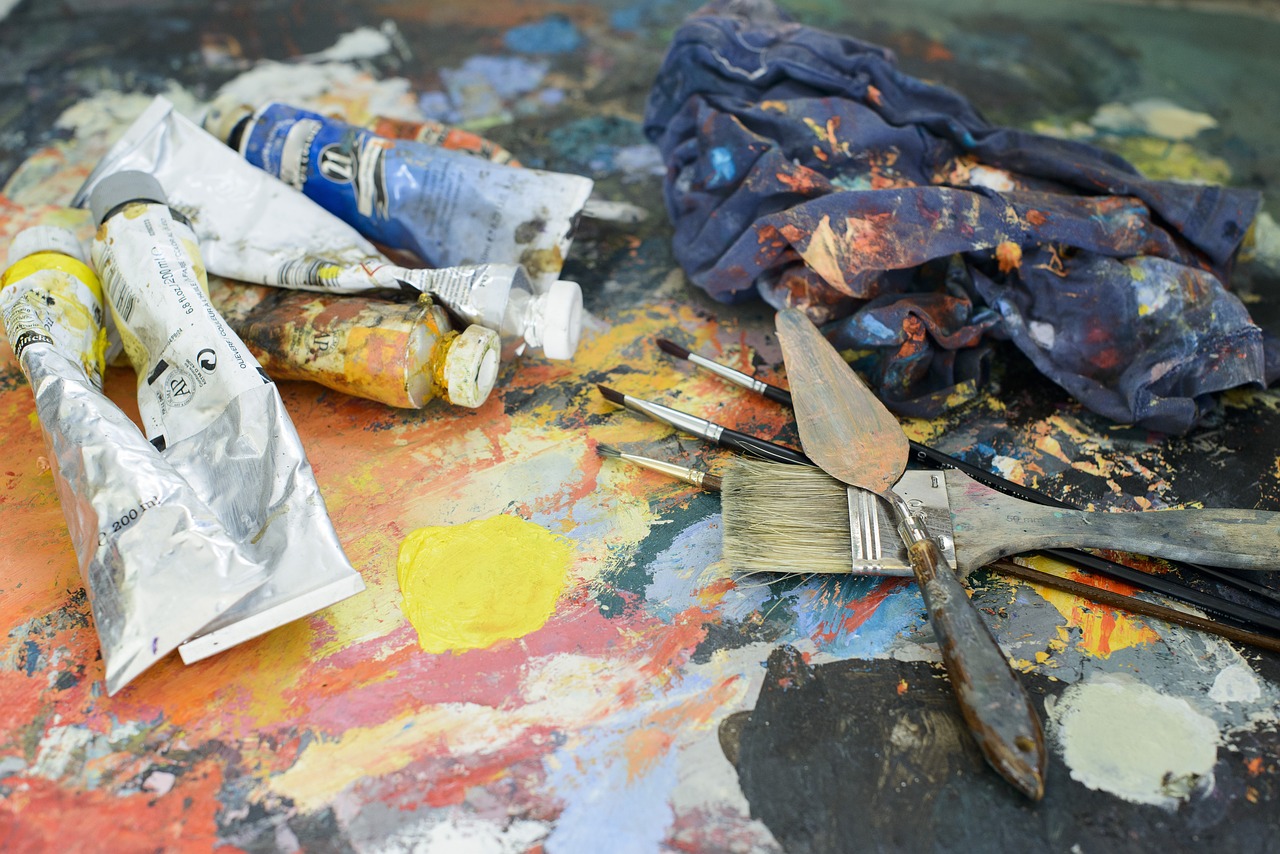
Comparative Techniques
When diving into the world of ambidextrous art, one can’t help but marvel at the variety of techniques that artists employ to harness the power of both hands. It’s like watching a magician perform—each movement is deliberate and purposeful, yet it seems almost effortless. So, how do these artists manage to create such intricate works using both hands simultaneously? The answer lies in their unique approaches and adaptations.
Many ambidextrous artists develop a style that allows them to use their hands in complementary ways. For instance, while one hand focuses on the finer details—like shading or intricate line work—the other hand might be responsible for broader strokes or background elements. This division of labor not only enhances efficiency but also adds a dynamic quality to the artwork that is hard to achieve with a single hand.
Consider the following comparative techniques often employed by ambidextrous artists:
- Simultaneous Drawing: This technique involves using both hands to draw different elements of a piece at the same time. It’s a dance of creativity where each hand contributes to the overall composition, often resulting in a harmonious balance.
- Mirroring Techniques: Some artists train their non-dominant hand to mirror the movements of their dominant hand. This can create stunning symmetry in their artwork, making it appear as if the piece is reflecting itself.
- Layering Techniques: Artists may use one hand to lay down the base layer of color or texture while the other hand adds details, allowing for a more complex and rich appearance in their final pieces.
Moreover, the choice of medium can greatly influence the techniques used. For instance, in digital art, artists often utilize tablets that allow for multi-touch capabilities. This means they can use both hands to manipulate tools, create textures, and apply colors simultaneously, which drastically changes the creative process compared to traditional media.
In traditional drawing, however, the techniques can be more tactile. Artists might switch between pencils, brushes, or pens, using one hand to hold the primary tool while the other hand assists by providing support or holding reference materials. This physical interaction with the materials can lead to a more intuitive and engaging creative experience.
Overall, the beauty of ambidextrous art lies in its diversity. Artists are not just using their hands; they are exploring the capabilities of their minds and bodies in tandem. It’s a celebration of creativity that breaks the mold of conventional drawing techniques, inviting others to join in the exploration. As more artists embrace ambidexterity, the art world is sure to see an explosion of innovative styles and methods that challenge our understanding of artistic expression.
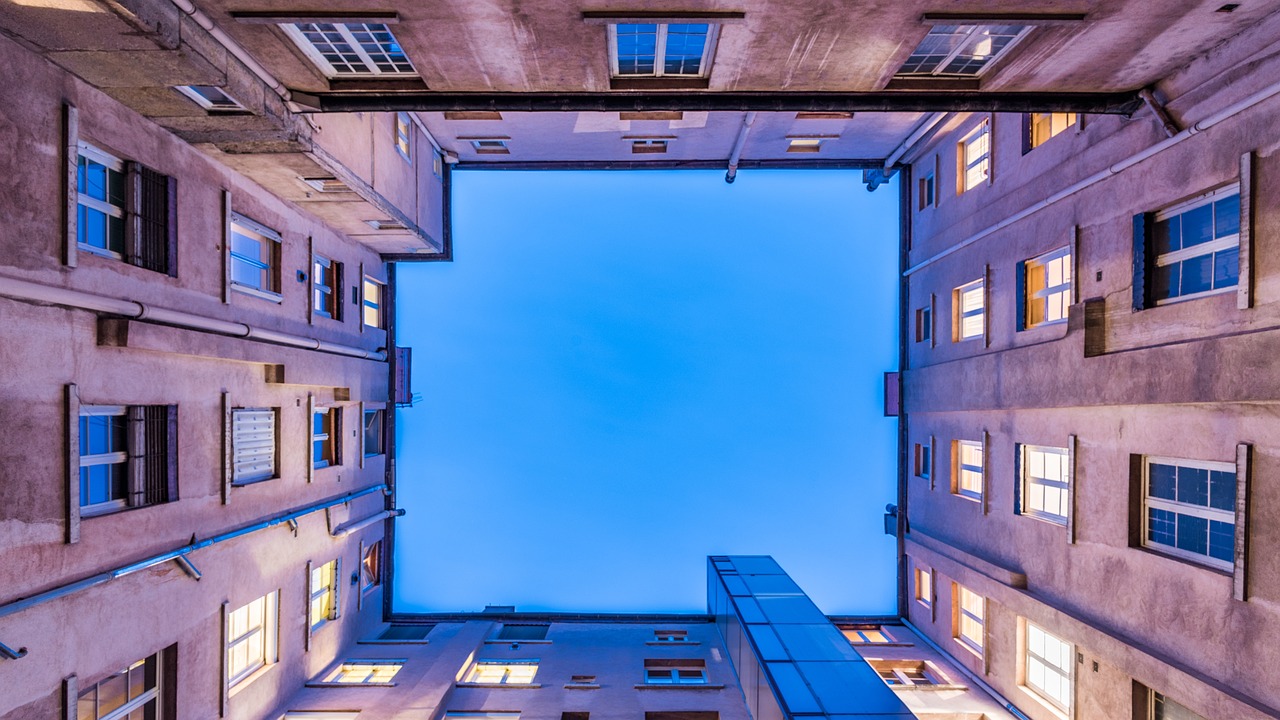
Modern Ambidextrous Practices
In the ever-evolving landscape of art, are gaining traction, captivating both artists and audiences alike. Today’s artists are not just content with traditional methods; they are pushing the boundaries of creativity by utilizing their ability to draw with both hands simultaneously. Imagine an artist standing before a canvas, paintbrush in one hand and pencil in the other, creating a harmonious blend of colors and lines. This captivating duality not only enhances their artistic expression but also opens up a world of possibilities.
One of the most exciting aspects of modern ambidextrous practices is the integration of technology. Artists are now using digital tools that allow them to draw with both hands, leveraging software that enhances their ability to create intricate designs and illustrations. For instance, programs like Adobe Fresco and Procreate offer features that enable artists to utilize multiple layers and brushes simultaneously, effectively turning their ambidextrous skills into a digital masterpiece. This fusion of traditional and modern techniques exemplifies how artists are adapting to the changing art scene.
Moreover, many contemporary artists are incorporating ambidextrous drawing into performance art. During live demonstrations, they showcase their unique skills by creating stunning pieces in real-time, often using both hands to simultaneously sketch and paint. This not only engages the audience but also serves as a powerful statement about the limitless potential of human creativity. The thrill of watching an artist effortlessly switch between hands, producing a breathtaking artwork, is nothing short of mesmerizing.
Additionally, social media platforms like Instagram and TikTok have become vital tools for ambidextrous artists to share their work and techniques with a global audience. Artists can now post videos demonstrating their dual-handed drawing methods, attracting followers who are eager to learn and be inspired. This community-driven approach fosters a sense of belonging, allowing artists to connect with others who share their passion for ambidextrous art.
As the practice of ambidextrous drawing continues to evolve, it opens doors to new artistic possibilities. Artists are experimenting with a variety of mediums, from traditional pencil and ink to innovative materials like 3D pens and digital tablets. The ability to use both hands not only enhances their technical skills but also encourages a more spontaneous and fluid approach to creativity. The beauty of ambidextrous art lies in its unpredictability, as artists embrace the unexpected twists and turns that come with using both hands.
In summary, modern ambidextrous practices are redefining the way we perceive art. By blending traditional techniques with contemporary tools and platforms, artists are crafting a new narrative that celebrates the duality of human expression. As we look to the future, it’s clear that ambidextrous art will continue to inspire and challenge both artists and art enthusiasts alike.
- What is ambidextrous drawing? Ambidextrous drawing involves the ability to use both hands simultaneously for artistic creation, enhancing creativity and expression.
- Can anyone learn to draw with both hands? Yes, with practice and dedication, anyone can develop ambidextrous drawing skills.
- What are the benefits of ambidextrous art? Benefits include improved coordination, enhanced creativity, and the ability to multitask in artistic endeavors.
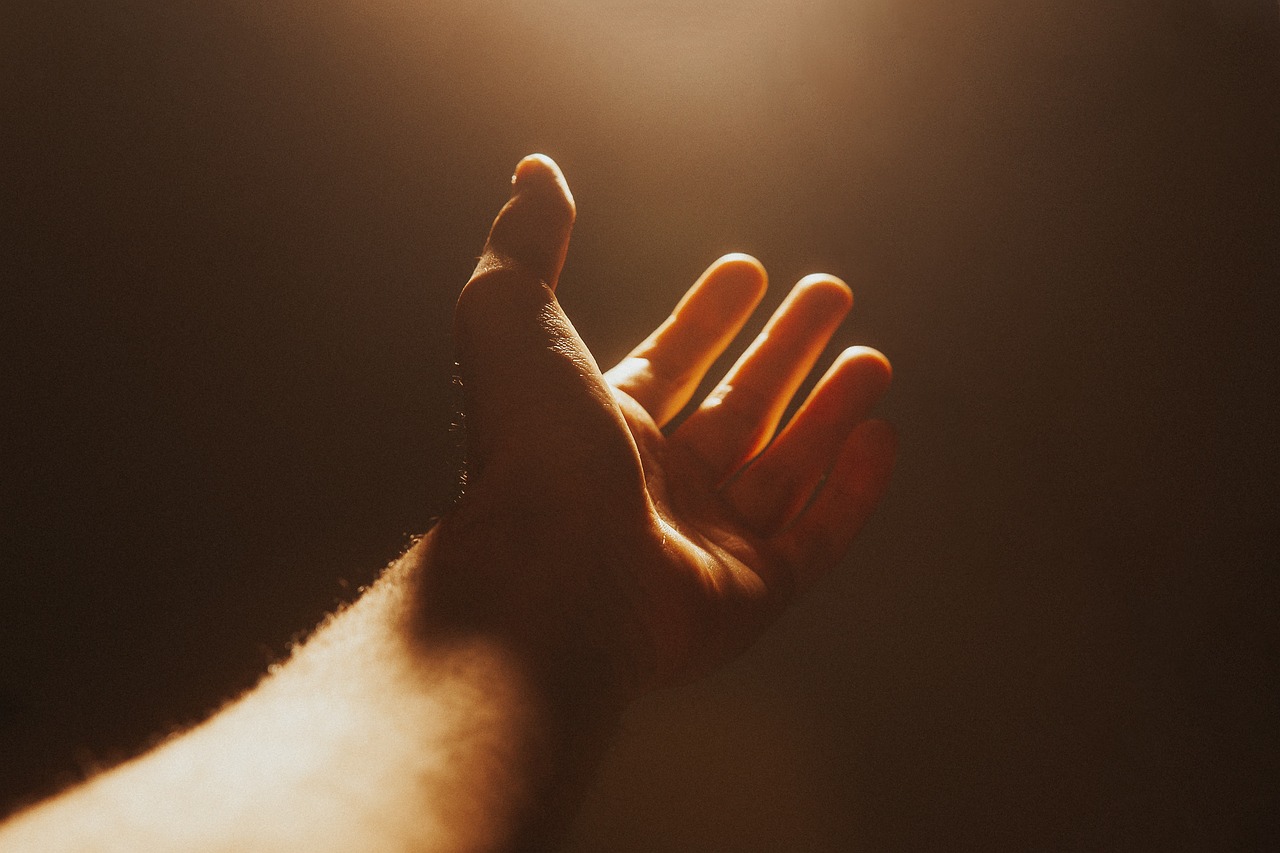
Benefits of Drawing with Both Hands
Drawing with both hands, often referred to as ambidextrous drawing, is not just a fascinating skill; it comes with a myriad of benefits that can enhance an artist's creative journey. Imagine being able to create intricate designs simultaneously with both hands! This ability opens up a world of possibilities, allowing artists to explore new techniques and styles. But it's not only about the art itself; the advantages extend to cognitive and psychological realms as well.
One of the most significant benefits of ambidextrous drawing is the improvement in coordination. When artists practice using both hands, they train their brain to communicate more effectively with their body. This dual-handed practice can lead to enhanced motor skills, making it easier to execute complex movements. Think of it like playing a musical instrument; just as a pianist uses both hands to create harmony, artists can achieve a more dynamic expression through ambidextrous techniques.
Moreover, drawing with both hands can boost creativity. When you engage both sides of your brain, you encourage a flow of ideas that might not surface when using only one hand. This creative synergy can lead to unique artistic expressions, as artists find themselves experimenting with different styles and perspectives. For instance, one hand might sketch the outline while the other fills in colors, resulting in a piece that is rich in texture and depth.
In addition to coordination and creativity, ambidextrous drawing can enhance an artist's ability to multitask. In today’s fast-paced world, multitasking is often seen as a valuable skill. Artists who can draw with both hands can tackle more complex projects, manage multiple elements in a single artwork, or even collaborate with others more effectively. Picture a muralist who paints large canvases: they can outline with one hand while adding details with the other, making the process more efficient and enjoyable.
Furthermore, the cognitive benefits are profound. Engaging both hands stimulates brain activity, which can lead to improved focus and concentration. As artists practice ambidextrous drawing, they may find themselves falling into a state of flow, where time seems to disappear, and their creativity flourishes. This immersion can be incredibly fulfilling and can even lead to a sense of meditative calm.
Lastly, let's not overlook the therapeutic aspects of drawing with both hands. Many artists have reported that this practice serves as a form of stress relief. The act of creating can be a powerful outlet for emotions, and using both hands may enhance this experience. For those recovering from injuries or dealing with cognitive impairments, ambidextrous drawing can also serve as a form of rehabilitation, helping to rebuild neural pathways and improve overall brain function.
In summary, the benefits of drawing with both hands are vast and varied, encompassing improvements in coordination, creativity, multitasking abilities, cognitive function, and even therapeutic outcomes. Artists who embrace this unique skill not only enrich their own practice but also contribute to a broader understanding of what it means to create art in today's world.
- Can anyone learn to draw with both hands? Yes! With practice and dedication, anyone can develop ambidextrous drawing skills.
- What are some exercises to improve ambidextrous drawing? Simple exercises include drawing basic shapes with both hands and gradually increasing complexity.
- Are there specific tools that can help? While standard drawing tools work, some artists prefer using dual-tipped markers or special pens designed for ambidextrous drawing.
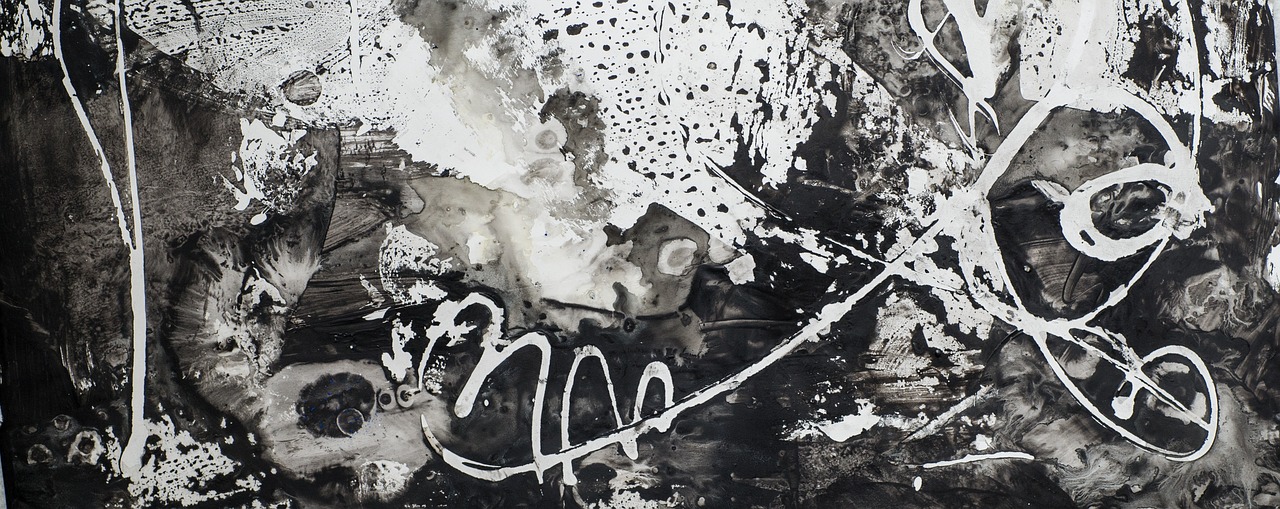
Development of New Skills
When it comes to developing new skills through ambidextrous drawing, the journey is as exciting as it is rewarding. Imagine being able to create art with both hands simultaneously, like a conductor orchestrating a symphony of colors and shapes. This ability not only enhances your artistic expression but also opens up a treasure trove of creative possibilities. The practice of drawing with both hands can significantly improve your overall coordination and fine motor skills. Just think about it: your brain is like a muscle, and the more you challenge it, the stronger it gets!
As you embark on this artistic adventure, you may find that your brain begins to forge new neural pathways, enhancing your cognitive abilities. Engaging both hands while drawing can lead to a deeper understanding of spatial relationships and proportions. It’s akin to training for a marathon; the more you practice, the more endurance and skill you develop. Additionally, ambidextrous drawing encourages you to think outside the box, pushing you to explore unconventional techniques and styles.
Here are some potential benefits you might experience as you cultivate ambidextrous skills:
- Increased Creativity: Working with both hands can stimulate different areas of your brain, leading to innovative ideas and artistic breakthroughs.
- Enhanced Coordination: As you practice, you'll notice an improvement in your hand-eye coordination, which is crucial for any artist.
- Multi-tasking Mastery: Drawing with both hands allows you to work on different elements of your art simultaneously, making your workflow more efficient.
Moreover, the act of drawing ambidextrously can be a profound meditative experience. It encourages mindfulness, as you become acutely aware of your movements and the sensations of the materials you are using. This mental engagement can lead to a state of flow, where time seems to disappear, and you are completely immersed in your art. It’s like being in a dance with your artwork, where both hands become partners in creation.
In conclusion, the development of new skills through ambidextrous drawing is not just about becoming proficient with both hands; it’s about expanding your artistic horizons and unlocking potential you never knew existed. So grab your sketchbook and start experimenting! Who knows what masterpieces await you when you embrace the challenge of drawing with both hands?
Q: Can anyone learn to draw with both hands?
A: Yes! With practice and dedication, anyone can develop ambidextrous drawing skills. It may take time, but the journey is worth it.
Q: What are some exercises to improve ambidexterity?
A: Simple exercises include drawing basic shapes with both hands simultaneously or practicing writing with your non-dominant hand.
Q: How long does it take to see improvement?
A: Improvement varies for each individual, but regular practice over weeks or months can lead to noticeable enhancements in your skills.
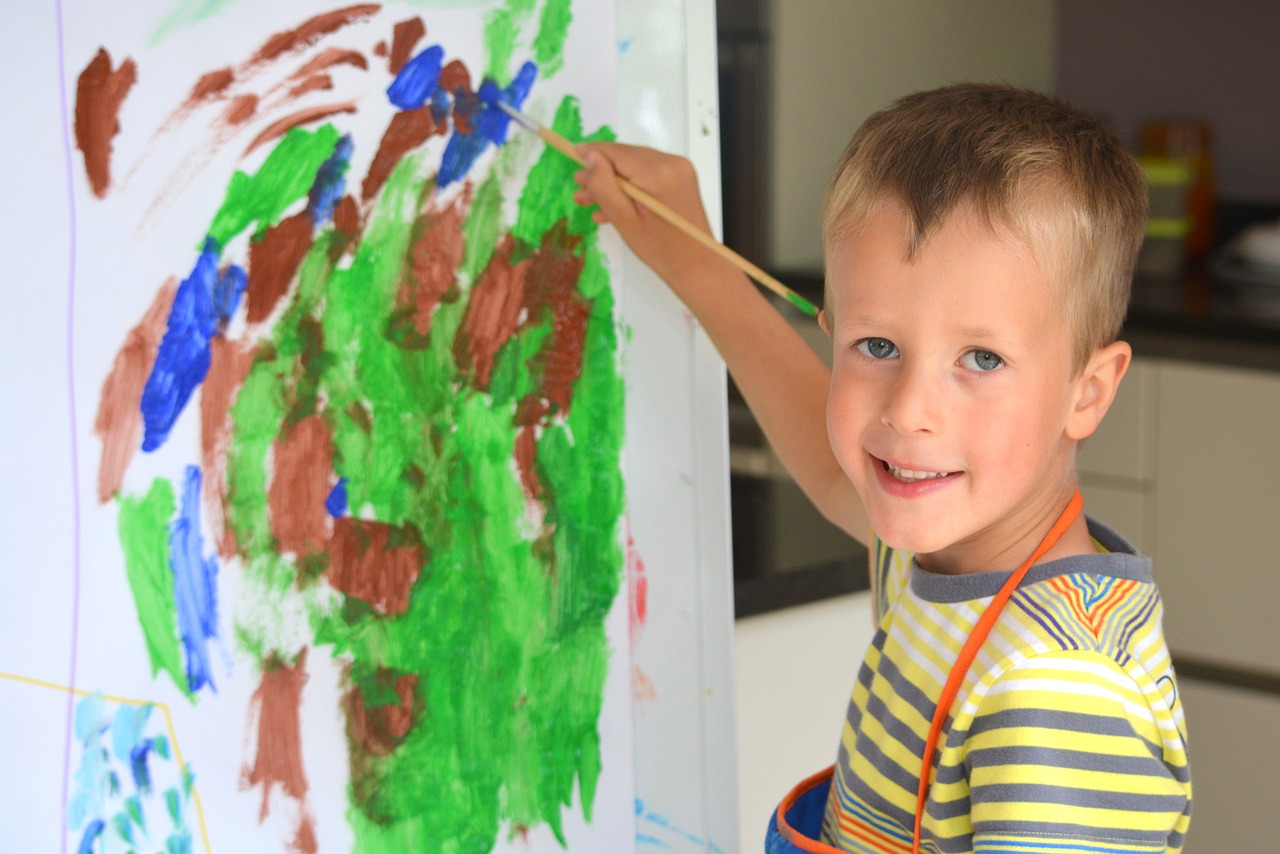
Therapeutic Aspects of Ambidextrous Art
Engaging in ambidextrous art isn't just a fascinating skill; it also offers a myriad of therapeutic benefits that can enhance both mental and emotional well-being. When artists draw with both hands, they tap into a unique form of expression that can be incredibly liberating. Imagine the feeling of freedom and creativity that comes from allowing both hands to work in harmony, creating a symphony of colors and shapes on the canvas. This practice can serve as a form of meditative therapy, providing a much-needed escape from the chaos of daily life.
One of the primary benefits of ambidextrous art is its ability to promote stress relief. The act of drawing, especially when using both hands, can significantly reduce anxiety levels. As you immerse yourself in the rhythmic motions of your hands, the worries of the day often fade away, leaving behind a sense of calm and tranquility. Furthermore, the focus required to coordinate both hands can act as a form of mindfulness, pulling your attention away from intrusive thoughts and grounding you in the present moment.
Moreover, ambidextrous drawing can enhance cognitive functions. By engaging both hemispheres of the brain, artists can improve their problem-solving skills, creativity, and even memory. This dual-handed practice encourages the brain to forge new neural pathways, which can lead to improved mental agility. It’s like giving your brain a workout, making it more robust and adaptable. This is particularly beneficial for individuals recovering from cognitive impairments or those looking to boost their mental agility.
In addition to cognitive benefits, ambidextrous art can also foster a sense of self-discovery and personal growth. Many artists find that exploring their ambidextrous abilities allows them to break free from conventional artistic boundaries. This exploration can lead to the discovery of new styles and techniques, enriching their overall artistic practice. The journey of learning to draw with both hands can be an empowering experience, encouraging individuals to embrace their unique talents and express themselves in innovative ways.
To summarize, the therapeutic aspects of ambidextrous art can be profound, encompassing stress relief, cognitive enhancement, and personal growth. As artists delve into this unique practice, they not only improve their artistic skills but also cultivate a deeper connection with themselves and their creativity. It's a journey worth embarking on, and the benefits can be truly transformative.
- What are the main benefits of ambidextrous art? Ambidextrous art promotes stress relief, enhances cognitive functions, and encourages personal growth through self-discovery.
- Can anyone learn to draw with both hands? Yes! With practice and dedication, most individuals can develop ambidextrous skills.
- Is ambidextrous drawing considered a form of therapy? Yes, it can be therapeutic, helping to reduce anxiety and improve focus.
- How can I start practicing ambidextrous drawing? Begin with simple exercises like drawing basic shapes or doodling with your non-dominant hand to build coordination.
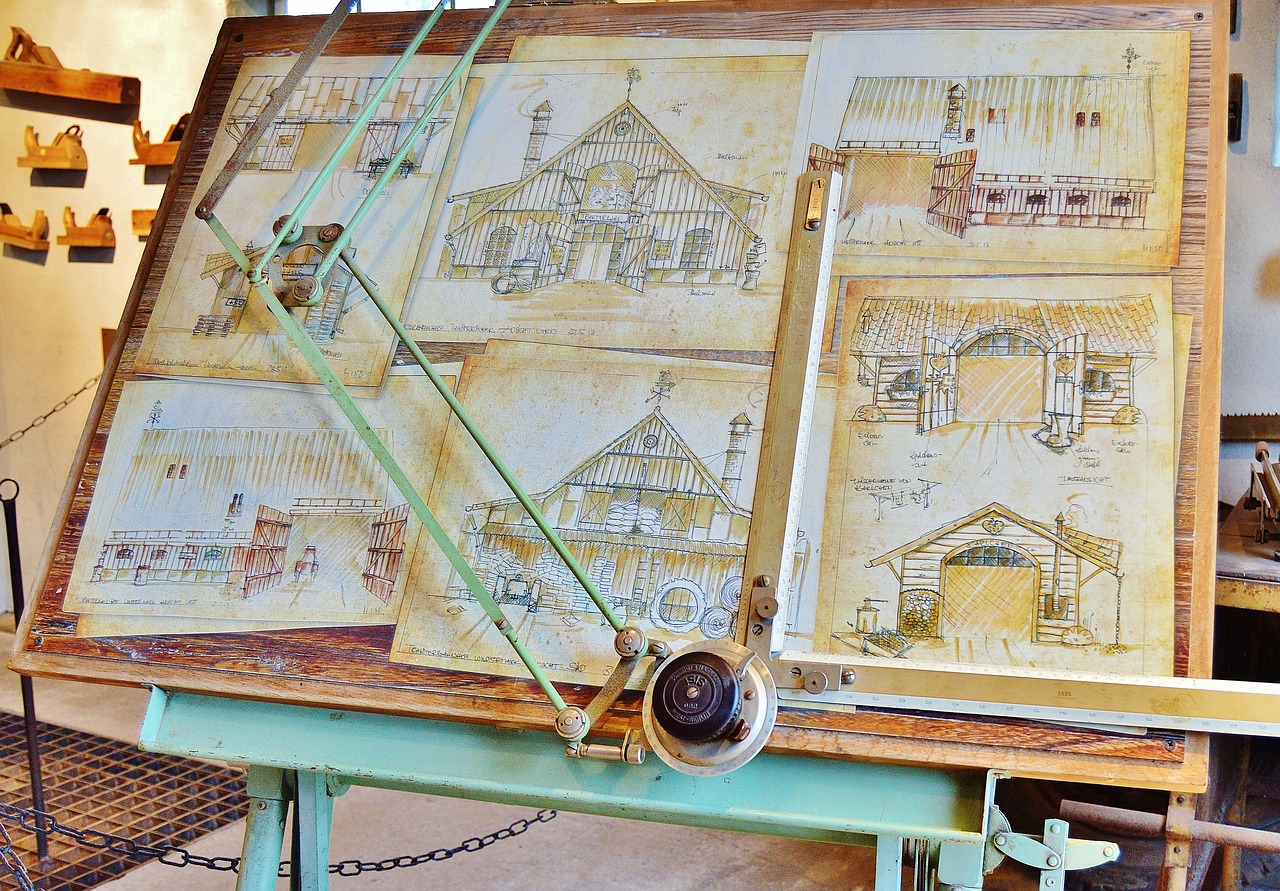
Techniques to Cultivate Ambidexterity
So, you want to become ambidextrous and draw with both hands? That’s fantastic! Cultivating ambidexterity is not just about being able to use both hands simultaneously; it’s about unlocking a new level of creativity and coordination. Whether you’re a seasoned artist or just starting out, there are several techniques you can employ to develop this unique skill. Let’s dive into some practical exercises that will help you on your journey to ambidextrous artistry.
First off, consistency is key. Just like any other skill, practice makes perfect. Start by dedicating a few minutes each day to exercises that focus on using your non-dominant hand. For example, try simple tasks like brushing your teeth or eating with your non-dominant hand. This will help you build muscle memory and coordination. You’ll be surprised how quickly you can adapt to using your other hand!
Next, consider integrating drawing exercises into your daily routine. One effective method is to draw simple shapes or lines with your non-dominant hand while simultaneously drawing with your dominant hand. This could be as simple as drawing circles or squiggly lines. Over time, aim to increase the complexity of the shapes you draw. This simultaneous practice not only enhances your dexterity but also helps you visualize how both hands can work together harmoniously.
Another great technique is to mirror drawing. This involves placing a mirror in front of you while you draw with one hand. Try to replicate the movements with your other hand as if you were mirroring your actions. This exercise not only improves coordination but also strengthens your brain's connection between both sides. It can be a fun way to create symmetrical designs or patterns that highlight your ambidextrous skills.
To really push your boundaries, you might want to explore dual-handed drawing techniques. This means using both hands to create a single piece of art. For instance, you could use one hand to sketch the outline while the other hand fills in colors or details. This technique can lead to some truly unique artwork and helps you to think outside the box. It’s like having a creative conversation between your hands!
Additionally, consider incorporating musical elements into your practice. Playing a musical instrument can significantly enhance your ambidextrous abilities. Instruments like the piano or drums require both hands to work together in a coordinated manner, which can translate well into drawing. If you enjoy music, this could be a fun way to develop ambidexterity without it feeling like a chore.
Finally, don’t forget to keep your mind engaged and challenged. Try cross-lateral exercises that involve moving your arms and legs in opposing directions. For example, touch your right hand to your left knee while lifting your right leg. This not only improves physical coordination but also stimulates brain activity, which is crucial for developing ambidextrous skills.
In summary, cultivating ambidexterity is a rewarding journey that requires patience and dedication. By consistently practicing with both hands, integrating fun exercises, and challenging yourself in new ways, you'll discover a whole new world of artistic possibilities. Remember, it’s not just about the end result but also about enjoying the creative process along the way!
- Can anyone become ambidextrous? Yes! While some people may have a natural inclination, anyone can develop ambidextrous skills with practice.
- How long does it take to become ambidextrous? The time varies for each individual, but consistent daily practice can yield noticeable improvements in a few weeks.
- Will practicing with my non-dominant hand affect my dominant hand? Not at all! It can actually enhance your overall coordination and creativity.
- What if I find it frustrating? It’s normal to feel frustrated at times. Take breaks, and remember that progress takes time!
Frequently Asked Questions
- What is ambidexterity?
Ambidexterity refers to the ability to use both hands with equal skill. In the context of art, it means being able to draw, paint, or create using both hands simultaneously or interchangeably, which can lead to unique artistic expressions.
- Can anyone learn to draw with both hands?
While some individuals may have a natural inclination towards ambidexterity, many people can develop this skill through practice and dedication. With the right exercises and techniques, anyone can improve their ability to use both hands for drawing and other tasks.
- What are the benefits of drawing with both hands?
Drawing with both hands can enhance coordination, boost creativity, and improve multitasking abilities. It also offers cognitive benefits, such as improved focus and potential therapeutic effects, making it a rewarding practice for artists.
- Are there famous ambidextrous artists?
Yes! Throughout history, there have been several renowned artists known for their ambidextrous skills. They have used this unique ability to create stunning works of art, showcasing how dual-handedness can enhance artistic expression.
- What techniques can I use to develop ambidextrous drawing skills?
To cultivate ambidexterity, you can practice simple exercises like drawing shapes or lines with both hands, using both hands to create different elements of a composition, or even switching hands while sketching. Consistent practice is key!
- Is ambidextrous drawing therapeutic?
Absolutely! Engaging in ambidextrous drawing can provide stress relief, improve concentration, and even aid in cognitive rehabilitation. It allows for a meditative state that can be very beneficial for mental well-being.
- How does ambidexterity impact creativity?
Using both hands can lead to new ways of thinking and creating. It encourages artists to explore unconventional methods and can result in innovative artwork that might not emerge from using just one hand.



















